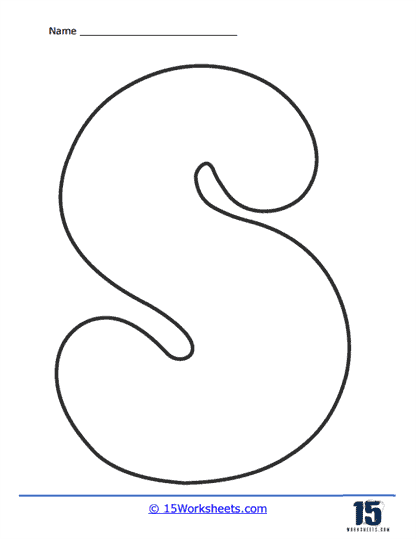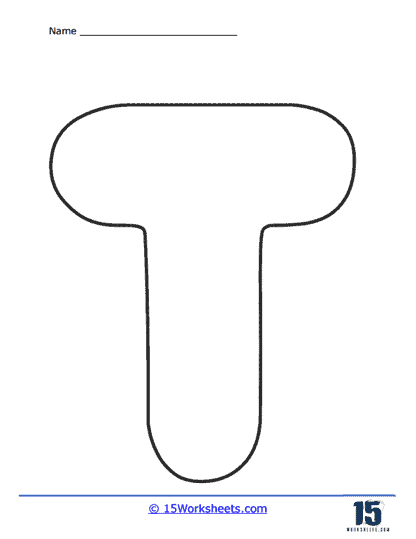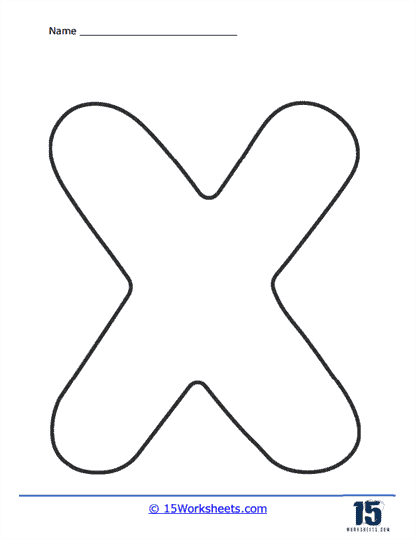Bubble Letters Worksheets
About These 15 Worksheets
Bubble letters are associated with vibrant street art, playful designs, and whimsical graphic illustrations, have found their way into the realm of education. Bubble letter worksheets, while seemingly simple and playful, carry profound educational value. They help bridge the gap between art and academics, promoting holistic development. Whether it’s for enhancing motor skills, fostering creativity, or merely breaking the monotony of standard writing practices, bubble letters have carved a niche in educational tools. By integrating such creative methodologies into the learning process, educators can ensure that students not only learn but also enjoy the journey of discovery.
At its core, bubble lettering is a form of artistic lettering where each letter is depicted as a rounded, bulbous shape, akin to a bubble. These worksheets contain exercises that encourage the student to practice this form of lettering, and they can range from simple individual letters to complete words or even sentences.
Types of Exercises
Basic Letter Tracing – The most fundamental type of exercise is the tracing of individual bubble letters. Here, each letter of the alphabet (both uppercase and lowercase) is presented in its bubble form. The student traces over these letters multiple times to get the hang of its form.
Complete the Letter – Some worksheets might present an incomplete bubble letter and require students to finish its structure. This exercise pushes the student to recall the letter’s shape and complete it without a full template.
Freestyle Drawing – These exercises allow more creativity. Students might be given a word or phrase and asked to write it in their own bubble letter style, promoting creativity while reinforcing the fundamentals of the style.
Coloring Activities – Given that bubble letters offer larger spaces within their structures, some worksheets incorporate coloring activities. This not only makes the process fun but also hones fine motor skills.
Decorative Touches – Some worksheets might guide students on adding decorative elements to their bubble letters, such as shadows, patterns, or additional doodles, enriching the artistic aspect of the exercise.
Why We Recommend the Printable Version Over Digital Use
1. Enhances Fine Motor Skill Development
Writing and drawing directly on paper strengthens fine motor muscles in the fingers and hands. This tactile experience:
– Builds better pencil control and grip
– Supports hand-eye coordination
– Lays a foundation for clear, legible handwriting
On a touchscreen, students often use a finger or stylus, which doesn’t provide the same resistance or precision needed to fully develop motor control.
2. Engages Multiple Senses
Printable worksheets offer multisensory interaction:
– Touch (holding a pencil, feeling the paper)
– Sight (seeing the layout in real-world scale)
– Sound (of the pencil on paper, reinforcing feedback)
This physical engagement improves memory retention and focus more than tapping or tracing on a screen.
3. Reduces Distractions
Digital devices can easily become a source of distraction due to apps, notifications, or multitasking. Printable worksheets provide a distraction-free environment where students can immerse themselves in the creative process.
4. Encourages Slower, More Intentional Work
The physical act of drawing or tracing on paper encourages students to slow down and be more intentional. This often leads to:
– Greater attention to detail
– Better letter formation
– A more reflective, creative process
While digital worksheets offer convenience, printable bubble letter worksheets deliver a more immersive, developmental, and creatively enriching experience. They connect students more deeply to the material and help build foundational skills that digital tools can’t fully replicate.
The Importance of Learning Bubble Letters
The importance of learning bubble letters extends beyond mere artistic expression. Writing in bubble letters necessitates a distinct level of precision and control, diverging from regular writing practices. Through consistent practice, students not only enhance their hand-eye coordination but also refine vital motor skills. Additionally, bubble letters provide a refreshing avenue for creativity. Unlike the constraints of standard lettering, this style invites students to delve into a world of varied sizes, innovative designs, and intricate decorations, thereby nurturing their inherent artistic talents.
On the cognitive front, mastering this new style of writing acts as a catalyst for cognitive flexibility. The process encourages the brain to venture beyond its comfort zone, adapting and learning in new ways. This experience strengthens cognitive capabilities and bolsters adaptability. Furthermore, the varied and lively exercises associated with bubble letter worksheets introduce a much-needed break from the routine monotony of traditional writing tasks. Their inherent fun and playful nature have the potential to sustain student engagement for extended periods.
Achieving proficiency in bubble lettering also serves as a confidence booster. The gratification derived from mastering a novel writing form instills a sense of accomplishment in students. This newfound confidence can be a driving force, motivating them to excel in other learning areas. From a vocational perspective, a strong foundation in bubble letters can pave the way for pursuits in graphic design, typography, or even street art. It provides a solid platform from which students can further hone and expand their skills.
The detailed nature of bubble lettering, marked by its specific curves and spaces, demands heightened concentration. This emphasis on focus is invaluable, equipping students with a skill set that is applicable and beneficial across diverse fields of study and everyday life.


























